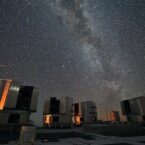
The Arctic polar vortex, a colossal ocean current characterized by its clockwise flow and wind speeds reaching up to 155 miles per hour, has been a subject of increasing concern due to the accelerating impacts of climate change. Over the past few years, this natural phenomenon has been growing in intensity at an alarming rate. However, the most recent development has sent shockwaves through the scientific community: the vortex has begun spinning in the opposite direction. This unexpected reversal, observed since March 4, has sparked discussions and raised questions about the potential consequences for global weather patterns. Scientists, who have long scrutinized the behavior of the polar vortex, attribute such deviations to rapid temperature increases in the stratosphere, a phenomenon witnessed earlier this year with temperatures soaring by approximately 90°F within a matter of days.

While there is some hope that the vortex will revert to its usual clockwise motion as indications from NOAA’s polar vortex blog suggest a slowing down of winds, the episode underscores the precarious nature of our planet’s climate system. Past disturbances to the polar vortex have yielded far-reaching weather impacts across the globe, exemplified by the 2019 cold front that plunged the Midwestern United States into a deep freeze after the vortex splintered into smaller currents. As climate change intensifies, the frequency and severity of such disruptions are expected to escalate, with potentially catastrophic implications for weather-related natural disasters like hurricanes and tornadoes. The narrative serves as a poignant reminder of the urgent need to combat climate change and mitigate the harm inflicted upon our fragile planet.



















